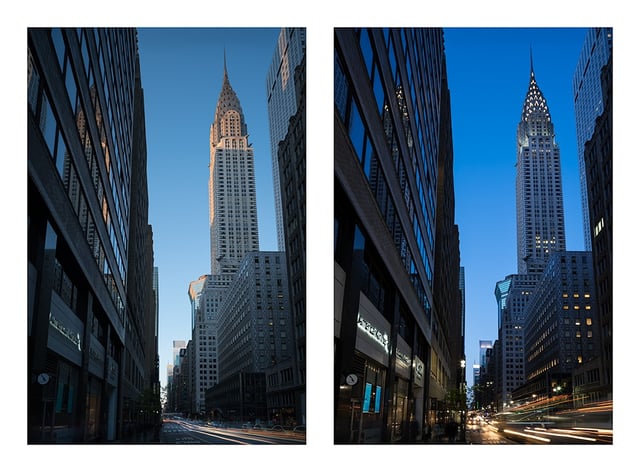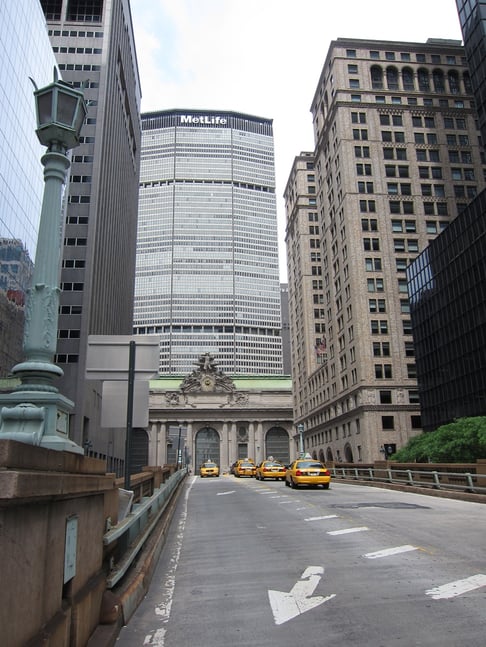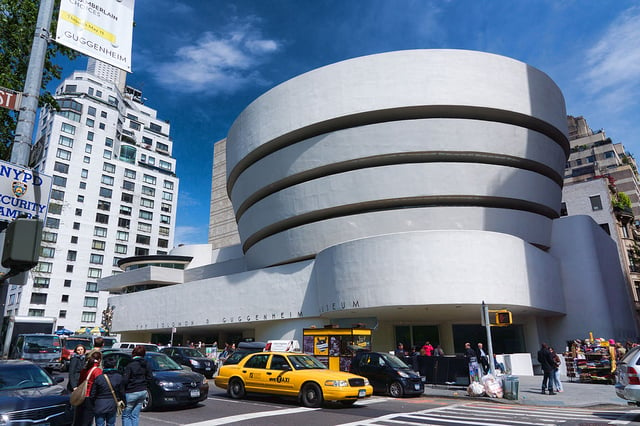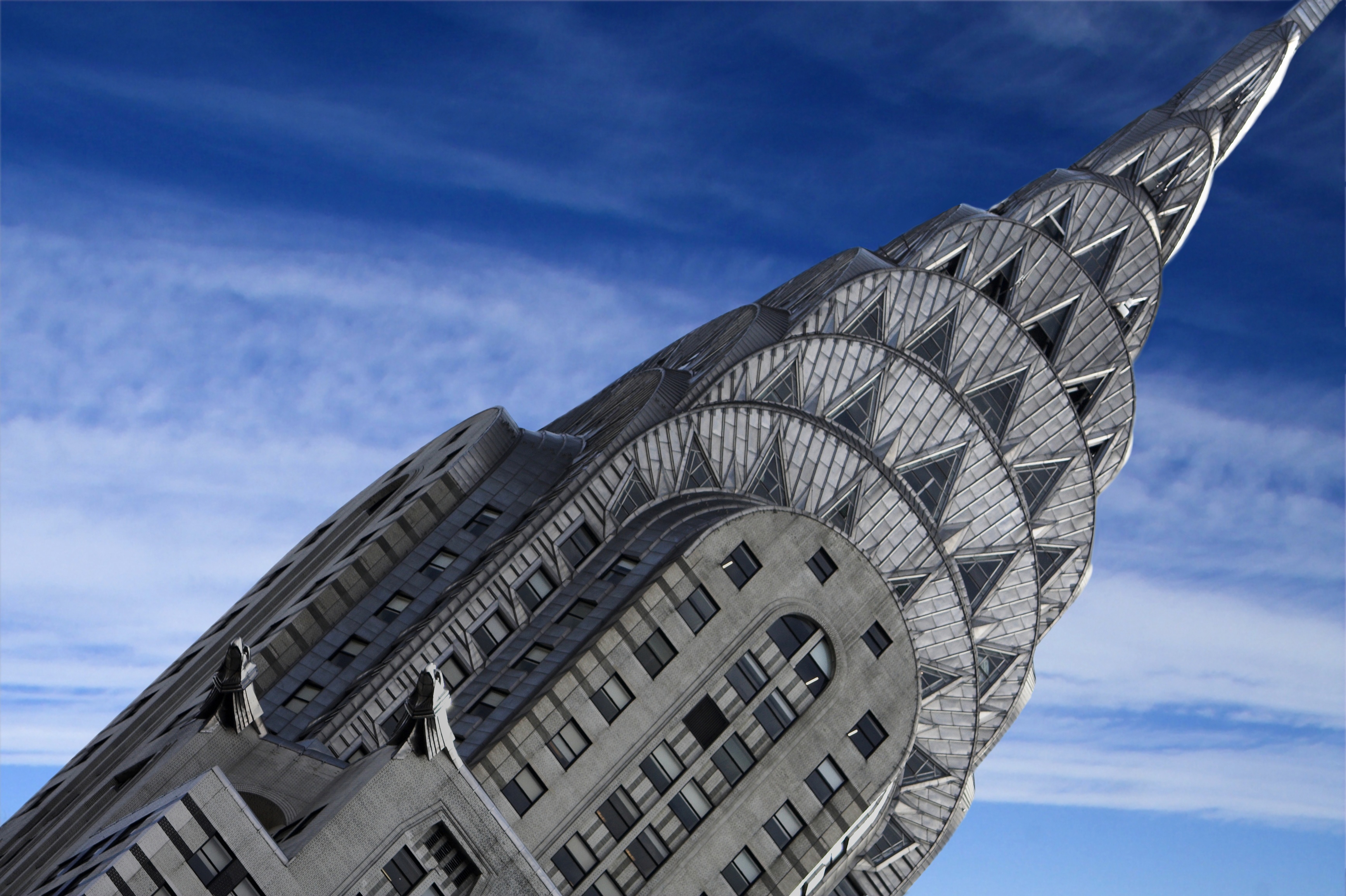It is surprising how much we dislike change. For a city that is constantly adapting to the next big thing, you would expect New Yorkers to be more used to embracing the exciting transformations in our city. As with most things, though, some do, some don’t, and sometimes it takes a lot of time.
Luckily, public reception of architecture tends to become more positive over time. Though the three buildings listed below are today regarded as lasting New York City icons, all three actually started out as some of the city’s most widely-reviled structures.

- The Chrysler Building
Photo Credit: 'Chrysler Building From Lexington Ave...' by John Cunniff under CC BY 2.0
Built with that fancy spire in order to become the world’s tallest skyscraper, the Chrysler Building’s height led to a swift plummet for one starchitect’s career.
William Van Alen, the architect of the Chrysler Building, became a successful designer in the early 1900s after he returned from studying at the École des Beaux-Arts in Paris.
Shy and aloof, Van Alen’s awkward silence at parties did not help to make him many friends within the NYC architecture community. His refusal to read about his colleagues’ projects in an effort to avoid becoming influenced by their ideas also did little to endear him to his contemporaries.
Luckily, Van Alen met H. Craig Severance, an outgoing and gregarious conversationalist who became the public face of their firm. The partnership went well for ten years until an argument cut the tie between the two men.
After their split, Van Alen’s prickly demeanor and odd style made it hard for him to land new clients. His 1927 commission to design a new skyscraper at 42nd Street and Lexington was a great chance, but after working on the designs for more than a year, the land was suddenly sold to Walter P. Chrysler. Van Alen won the new commission, but Chrysler scrapped all the former designs, as the car manufacturer was committed to building the world’s tallest skyscraper.
At the same time, Severance was also trying to build the tallest skyscraper at 40 Wall Street, yet Van Alen brilliantly conceived the now well-known spire trick that added height and made his own Chrysler Building the world’s tallest – for eleven months.
Unfortunately, Van Alen’s smart idea was seen as nothing more than a publicity stunt. Critics dismissed the building, saying it was “an automobile ad in the form of a skyscraper,” and that it had “no significance as serious design.” The Chrysler Building effectively ended William Van Alen’s career, and his name languished in obscurity for the rest of his lifetime. The building, of course, is now one of NYC’s most beloved and is an official landmark.

- The MetLife Building
Photo Credit: 'MetLife Building' by Stefano Longhi under CC-BY-NC-ND 2.0
Once universally detested, the massive MetLife Building blocks the view of upper and lower Park Ave., yet has now managed to become the focus of preservation groups.
From the beginning, everyone knew something was wrong with the MetLife / Pan Am building. After commissioning the initial design from Emery Roth and Sons, the building’s developer hired two additional designers to look over the plans. Pietro Belluschi and Walter Gropius added their own spin to the building— literally— by rotating the axis to assume an east-west orientation and widening the sides so that the building formed an octagon. Still, though, this did little to change public perception.
As the final tall tower erected before the citywide law prohibiting corporate logos and names on the tops of buildings, the hulking monolith not only dwarfed Grand Central Terminal to the south, it also proudly displayed the name of the company it housed, meaning that irritated New Yorkers knew exactly which company deserved the full force of their fury.
In 1987, a poll in the New Yorker indicated that the MetLife Building was the number one tower New Yorkers would want to see demolished, but that wasn’t the only time they spoke out against it.
Throughout the years, critics have deemed it, “gigantically second rate” and “conspicuous for its ugliness.” When MetLife announced in 1992 that they would update the logo, Robert A. M. Stern, typically a defender of modern buildings, asked, “Can’t they just leave the sign and take the building down?”
Surprisingly, modern preservation groups seek to protect the MetLife Building. thirty-two-year-old John Jurayj, a member of a preservation organization, lauds it as “a very high quality building.”

- Solomon R. Guggenheim Museum
Photo Credit: 'Solomon R. Guggenheim Museum' by Jean-Christophe BENOIST under CC BY 3.0
The Guggenheim was given many comparisons by critics before its opening to the public—from “an inverted potty” to a “gigantic snail shell”. Today, it is considered one of the most important buildings of the 20th century.
Frank Lloyd Wright was apparently a natural choice for architect of the Guggenheim museum that was to be constructed in New York City. Wright was inspired by the abstract paintings of Wasilly Kandinsky, which were a part of Guggenheim’s personal collection, when drafting his design for the museum. From the start, it wasn’t necessarily locals as much as artists insisting that it was going to be impossible to properly display art on a slanted spiraling slope.
Construction workers and New York papers quickly followed suit in criticism. Many papers insisted the museum was Wright’s joke on New York City, as Wright was known to detest the skyscrapers around. Journalist Brendan Gill wrote, “It is a freak that astonishes passerby. It bears no relationship to its neighbors…”
The criticism didn’t bother Wright, though, he was a pioneer in design and always a step ahead when it came to lasting trends. Unfortunately, Guggenheim and Wright passed away before the museum opened to the public in 1959. Upon its opening, reviews were again mixed, with some feeling uncomfortable at the interiors low parapets and others being thrilled at the feeling of being in a continuity of space. Today the building is often considered one of Frank Lloyd Wright’s greatest works.
A Look Forward
With big change comes big reactions, especially if it’s change to something you love, like our dear New York City. And if you love something enough (and you’re stuck with it) your opinion of the change is likely to shift over time. Architecture critic and historian Judith Dupré believes some peoples currently negative response to certain other buildings will change over time.
These iconic buildings may just serve as a much deeper reminder about the incredible city that surrounds us: it is an ever-changing, ever-growing, indomitable city that New Yorkers are proud to call home.
In 100 years, perhaps this new tower that we so dislike, or The Westin New York, or 432 Park— any of our more divisive local edifices— will come to symbolize the everlasting beauty of the city we love.
As we transition into winter here in New York City, the falling leaves and chilled temperatures remind us that all things change. Perhaps, someday far in the future, the M.T.A fan plant will be seen as a masterpiece of architecture and the younger generation will fight to preserve it– or perhaps not.
Only time will tell.
Subscribe to Milrose Insights so you can keep up with the latest news and thought-provoking articles about NYC architecture.






